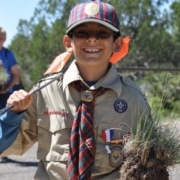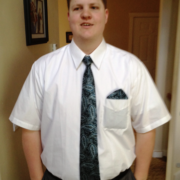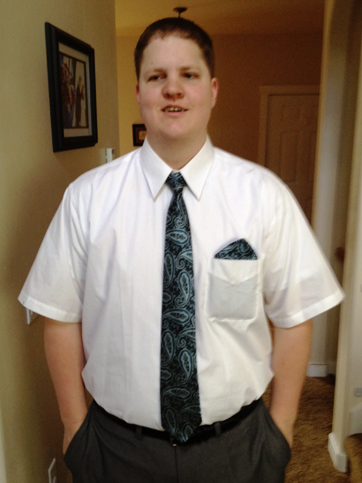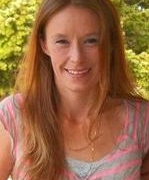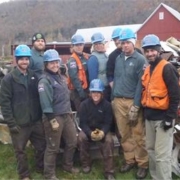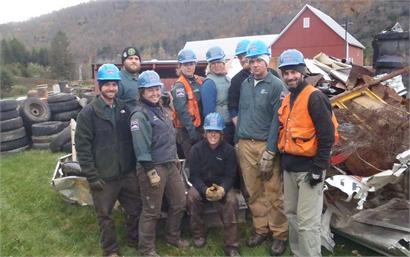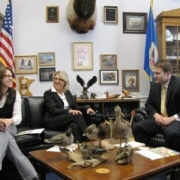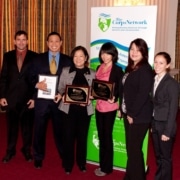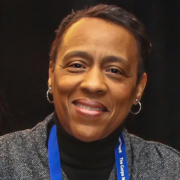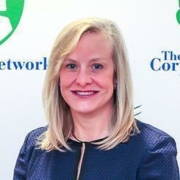Sarah LaRocque, a former member of Heart of Oregon Corps, won Corpsmember of the Year in 2009 for her commitment to service and self improvement. Read below to find out what she’s been up to since accepting her award, or find out more about Sarah and her Corps experience by reading her bio from our 2009 National Conference.
Sarah LaRocque certainly has her hands full. With a 5-year-old daughter in kindergarten, an 18-month-old son, two of her boyfriend’s children coming to stay every other weekend, and a newly adopted English Bulldog, Sarah is busy, but happy.

“I think we could start our own soccer team, here!” she said.
During the summer of 2013, Sarah will celebrate having worked for the same company – Bend Broadband – for five years. She was recruited to join the company through Heart of Oregon, the Corps that helped Sarah get back on her feet after an unstable adolescence that involved family loss, homelessness, and substance abuse.
Sarah heard about Heart of Oregon Corps from her parole officer when she was 22. She had recently finished her probation, given birth to her first child, and achieved sobriety. As a single mother with bills mounting, Sarah needed to find a job. Unfortunately, without much formal education, it proved very difficult to compete for well-paying positions. Joining Heart of Oregon seemed like a good way for her to gain job skills and maintain some of the positive gains she had recently achieved.
“I liked the idea of helping,” said Sarah. “At that time I was doing some bad stuff, so giving back to the community that I had – in a sense – hurt, made me feel really good. It seemed like a great opportunity to give back and show people that I could do something good.”

During her time with Heart of Oregon between 2007 and 2008, Sarah earned her GED, participated in a program that delivered free firewood to the poor and elderly, participated in debris cleanup efforts, and helped build Habitat for Humanity homes. She says these projects helped her learn valuable lessons about the importance of teamwork.
“We had to work a lot on communicating and making sure everyone was communicating together and working as a team,” said Sarah. “I think that’s a skill you can carry with you for your whole life, in any job.”
Sarah, who is now 29, isn’t sure what her life would look like had she not found Heart of Oregon, but she believes that a main reason why she can feel comfortable and happy today is because she had a successful Corps experience.
“I might have been working at McDonald’s or something. Who knows where I would’ve been. But I definitely think that without [Heart of Oregon] I wouldn’t have gotten the job that I got and I don’t think I would have the drive to do what I am doing today,” said Sarah. “I don’t know if I would be doing bad, but I definitely wouldn’t be striving for a better future for my kids the way I am now.”
Sarah says Heart of Oregon helped her learn how to budget and save money. They helped her put aside old regrets and learn how to see herself as a good person again. She is certain her life today would be harder if it weren’t for her experience in the Corps.
These days, Sarah is a Senior Customer Care Representative with Bend Broadband. She also finds time to volunteer at her daughter’s school. In a few years, when her children are a little older, she plans to go back to school to earn a degree or professional certificate. For now, her main goal is to become a homeowner within the next year.
“We have a good savings going, so we should be able to own a house and have a place that we can raise our children in,” said Sarah. “I’m trying to just have fun with the kids while they’re young and they still like us!”
To any young people planning on joining a Corps, Sarah would remind them that it is their own choice whether to take the opportunities the Corps presents and run with it, or not take the opportunities seriously and continue to struggle. She says:
“I would just tell them to stick with it. It’s hard sometimes, but you’ll be very proud of yourself in the end. You get through it and, if you take it seriously, the rewards outweigh the struggles that you go through. You can look back on it and say ‘that’s something that I did.’ It can be hard these days to look back on your youth and be proud of something you accomplished.”
Sarah can certainly look back and be proud of what she accomplished with the help of Heart of Oregon Corps.
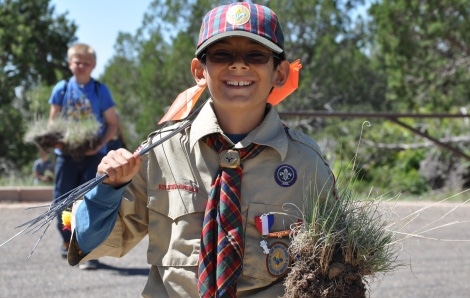 The Citizens Conservation Corps of West Virginia (CCC) has announced details on 352 community service projects that will be performed by 40,000 Boy Scouts throughout southern West Virginia next summer.
The Citizens Conservation Corps of West Virginia (CCC) has announced details on 352 community service projects that will be performed by 40,000 Boy Scouts throughout southern West Virginia next summer.
